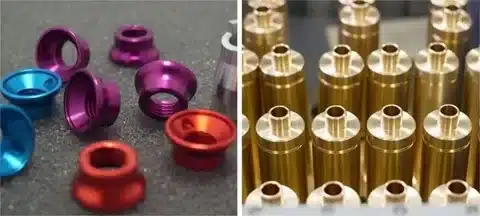Metal cutting is a foundational skill in construction, metalworking, and DIY projects. While many associate circular saws primarily with wood cutting, these versatile tools can effectively cut through various metals when properly equipped and operated. This comprehensive guide explores everything needed to successfully cut metal with saw blades using a circular saw, from selecting the right blade to executing precise, safe cuts.
Understanding Metal-Cutting Circular Saws

Not all circular saws are created equal when it comes to cutting metal. Metal-cutting circular saws are specifically designed to handle the unique challenges of slicing through tough materials like steel, aluminum, and copper. These specialized circular saw blades typically feature more robust motors, enhanced cooling systems, and specialized blade guards to manage the heat and sparks generated during metal cutting operations.
Standard circular saws can cut thin sheet metal and softer metals when fitted with the appropriate blade, but dedicated metal-cutting circular saws offer superior performance, safety, and precision for serious metalworking projects. These tools range from portable handheld models to larger bench-mounted units designed for industrial applications.
Selecting the Right Circular Saw for Metal Cutting

When choosing a circular saw for metal cutting projects, several factors warrant consideration:
Power rating: Metal cutting requires significant power. Look for saws with at least 15 amps for handheld models or higher wattage for stationary units.
Speed control: Variable speed settings are essential when cutting different types of metals. Softer metals like aluminum require faster cutting speeds, and one must always wear protective gear while harder metals like stainless steel need slower speeds to prevent overheating.
Construction quality: Metal cutting generates substantial vibration and heat. Choose saws with robust construction, preferably with metal gearing and high-quality bearings that can withstand these demands.
Cooling features: Some advanced metal-cutting circular saws incorporate cooling systems or lubricant delivery mechanisms to extend blade life and improve cut quality.
Spark management: Effective guards and safety goggles, along with spark deflection systems, enhance safety during operation.
For occasional light-duty metal cutting, a standard circular saw with the appropriate blade may suffice. However, frequent or heavy-duty metal cutting projects, as well as cutting wood, warrant investment in a dedicated metal-cutting circular saw for optimal results and safety.
Essential Metal-Cutting Blades for Circular Saws
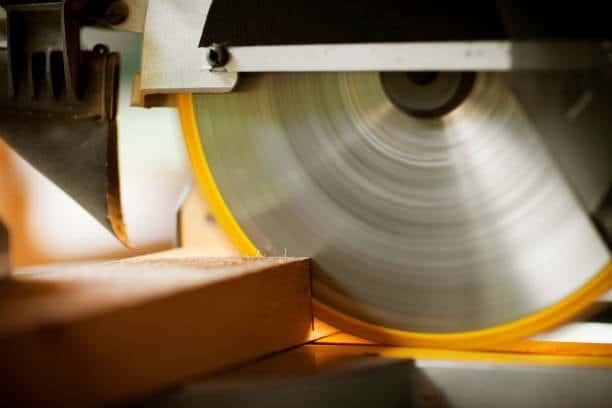
The blade is perhaps the most critical component when cutting metal with a circular saw. Several types of blades are available for different metal-cutting applications:
Abrasive metal-cutting discs: These economical options consist of abrasive particles bonded together. They work through friction rather than teeth and are suitable for general-purpose metal cutting. However, they wear quickly and generate significant heat.
Carbide-tipped metal-cutting blades: These premium blades feature carbide teeth specifically designed for metal cutting. They last significantly longer than abrasive discs and produce cleaner cuts with less heat generation.
Cermet-tipped blades: Combining ceramic and metal materials, these high-performance blades offer exceptional hardness and heat resistance for cutting through tough metals like stainless steel.
Diamond blades: For cutting extremely hard metals or metal composites, diamond blades provide unmatched durability and cutting performance, albeit at a higher price point.
When selecting a blade, key considerations include:
- Tooth count: Higher tooth counts (60-80 teeth) produce smoother cuts but cut more slowly
- Kerf width: Thinner kerfs require less power but may flex during cutting
- Blade diameter: Must match your circular saw’s specifications
- Arbor size: Must fit your saw’s mounting system
Always verify that the blade’s maximum RPM rating exceeds your saw’s maximum speed to ensure safe operation.
Safety Precautions Before Cutting Metal
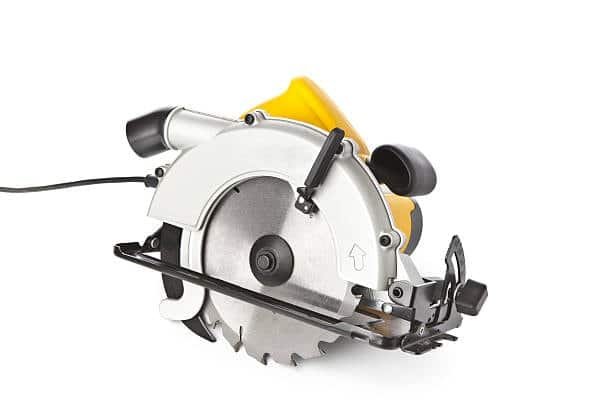
Metal cutting presents unique hazards that require strict safety protocols:
Personal protective equipment: Always wear safety glasses, ear protection, heavy-duty gloves, and flame-resistant clothing. A face shield provides additional protection from flying sparks and metal fragments.
Work area preparation: Remove all flammable materials from the cutting area. Keep a fire extinguisher nearby. Work on a stable, non-combustible surface.
Workpiece security: Firmly clamp the metal being cut to prevent movement during cutting operations. Never hold the material by hand while cutting.
Tool inspection: Check that guards are functioning properly and that the blade is securely mounted and in good condition before each use.
Electrical safety: Ensure proper grounding when using electric tools. Keep cords away from the cutting path and hot metal shavings.
Ventilation: Provide adequate ventilation to disperse metal dust and fumes, particularly when cutting galvanized or coated metals that may release toxic substances when heated.
Taking these precautions seriously can prevent serious injuries and create a safer working environment for metal cutting operations.
Preparing Your Metal Workpiece

Proper preparation of the metal workpiece is essential for achieving accurate cuts and maximizing safety:
- Measure and mark precisely: Use a permanent marker or scribe to clearly mark cutting lines. For straight cuts, use a square or straightedge as a guide.
- Clean the cutting path: Remove rust, paint, or coatings along the cutting line to reduce sparks and prevent blade clogging.
- Support the material properly: Position the workpiece so the cut portion can fall away freely without binding the blade. Use sawhorses or a sturdy work surface that won’t be damaged by the blade if it cuts through the material.
- Secure firmly: Use clamps or a vise to immobilize the workpiece. Ensure clamping doesn’t cause the material to flex or bend, which could result in binding or kickback.
- Consider cooling: For thicker metals, applying cutting oil or lubricant along the cutting line can reduce friction and extend blade life.
- Plan for offcuts: Position the work so cut pieces fall safely without causing injury or damage.
Taking time to properly prepare the workpiece significantly improves cut quality and reduces the risk of accidents during operation.
Proper Technique for Cutting Metal with a Circular Saw

Mastering the correct technique ensures clean cuts and prolongs the life of both the saw and blade:
- Set the correct depth: Adjust the blade to extend approximately 1/4 inch beyond the thickness of the metal being cut. This minimizes binding while maintaining cutting efficiency.
- Position yourself safely: Stand to the side of the cutting line, not directly behind the saw, to avoid potential kickback injuries.
- Start with control: Begin cuts with the saw at full speed before contacting the metal. This prevents the blade from catching and reduces the risk of kickback.
- Maintain steady pressure: Apply firm, consistent forward pressure without forcing the saw. Let the blade do the work at its own pace.
- Monitor cutting speed: Cut too slowly and the metal heats excessively; too quickly and you risk binding or kickback. Find the optimal pace where the saw cuts smoothly without bogging down.
- Stay aligned: Follow marked cutting lines precisely. Using a guide rail or straightedge enhances accuracy for straight cuts.
- Complete the cut: Maintain full power until the cut is complete, then release the trigger and wait for the blade to stop completely before setting the saw down.
- Allow cooling time: Give both the blade and cut material time to cool between cuts, especially when making multiple cuts in succession.
With practice, these techniques become second nature, resulting in professional-quality metal cuts with a circular saw.
Cutting Different Types of Metals
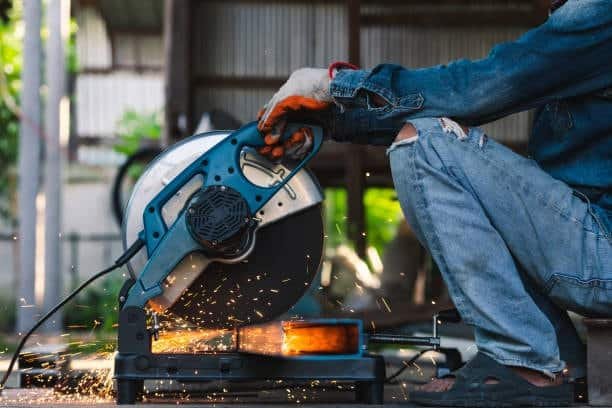
Different metals require specific approaches for optimal cutting results:
Aluminum:
- Use a blade with many fine teeth
- Apply cutting lubricant for thicker pieces
- Cut at higher speeds than ferrous metals
- Clamp firmly to prevent vibration
Mild Steel:
- Medium-tooth carbide blades work well
- Moderate cutting speed prevents overheating
- Expect significant sparking during cutting
- Allow for cooling between cuts
Stainless Steel:
- Requires specialized stainless steel cutting blades
- Cut at slower speeds to prevent work hardening
- Apply cutting fluid for thicker pieces
- Expect considerable heat generation
Copper and Brass:
- High-speed cutting works well
- Fine-toothed blades produce cleaner edges
- Secure firmly to prevent chattering
- Be aware that these metals can gum up blades
Cast Iron:
- Brittle nature requires careful support
- Produces considerable dust rather than chips
- Cut at moderate speeds
- Use coarser-toothed blades
Always consult the blade manufacturer’s recommendations for specific metals to achieve optimal results and maximize blade life.
Troubleshooting Common Metal Cutting Problems
Even experienced users encounter difficulties when cutting metal with circular saws. Here are solutions to common problems:
Excessive sparking:
- Reduce cutting speed
- Check for proper blade selection
- Ensure blade isn’t dull or damaged
- Apply cutting lubricant if appropriate
Blade binding:
- Check that the material is properly secured
- Ensure the cutting path remains open as cutting progresses
- Verify blade depth is set correctly
- Maintain steady forward pressure without forcing
Rough or jagged cuts:
- Replace worn blades
- Reduce cutting speed
- Use a blade with more teeth
- Ensure material is properly supported and doesn’t vibrate
Premature blade wear:
- Verify the blade is appropriate for the metal being cut
- Apply cutting lubricant
- Adjust cutting speed
- Check for material contaminants that might accelerate wear
Motor overheating:
- Allow the saw to cool between cuts
- Avoid forcing the saw through the material
- Consider upgrading to a more powerful saw for thick metals
- Check for proper ventilation around the motor
Addressing these issues promptly with a cold saw improves cutting results and extends the lifespan of both the saw and blades.
Maintaining Your Saw for Metal Cutting
Regular maintenance of the machine preserves performance and safety when using circular saws for metal cutting:
- Clean after each use: Remove metal dust and debris from the saw’s housing, vents, and moving parts using compressed air or a brush.
- Inspect the blade: Check for damaged or missing teeth, warping, or excessive wear. Replace blades at the first sign of diminished performance.
- Lubricate moving parts: Apply appropriate lubricants to bearings and adjustment mechanisms according to the manufacturer’s recommendations.
- Check electrical components: Inspect cords for damage and ensure all switches function properly. Verify that grounding systems remain intact.
- Maintain guards: Ensure blade guards move freely and return to position properly. Never disable or remove safety features.
- Tighten fasteners: Vibration from metal cutting can loosen screws and bolts. Regularly check and tighten all fasteners.
- Store properly: Keep the saw in a dry location away from extreme temperatures. Store blades flat to prevent warping.
Implementing a consistent maintenance routine significantly extends the lifespan of metal-cutting circular saws and ensures they perform safely and effectively when needed.
Advanced Metal-Cutting Techniques
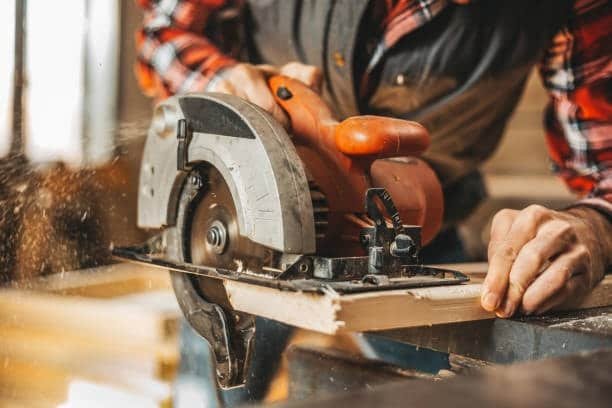
Once basic metal-cutting skills are mastered, these advanced techniques can enhance precision and capability:
Plunge cutting: Starting a cut in the middle of a workpiece requires careful technique. Begin with the front of the shoe resting on the material and the blade clear. Power up the saw, then slowly lower the blade into the material while maintaining firm control.
Bevel cutting: Many circular saws allow angle adjustments for bevel cuts. When cutting metal at an angle, use additional caution as the blade contacts more material surface area, increasing resistance and heat special blade.
Circle cutting: Special jigs enable cutting perfect circles in sheet metal. These attach to the saw’s base plate and pivot around a center point power source.
Stack cutting: Multiple thin sheets can be cut simultaneously by securely clamping them together, increasing efficiency for repetitive cuts in thin stock plastic.
Curve cutting: While circular saws excel at straight cuts, gentle curves can be achieved in thin sheet metal by making a series of relief cuts approaching the final cutting line, then finishing with careful freehand cutting cutting steel.
These advanced techniques expand the versatility of circular saws for metal cutting, allowing for more complex fabrication projects correct blade..
Conclusion
Mastering metal cutting with circular saws opens up countless possibilities for construction, fabrication, and DIY projects. This skill empowers users to work confidently with diverse metals, from thin aluminum sheets to structural steel components personal experience. While specialized metal-cutting tools like bandsaws and plasma cutters have their place, the versatility and accessibility of properly equipped circular saws make them indispensable for many metalworking applications.
By applying the comprehensive guidance in this article, both beginners and experienced users can achieve professional-quality metal cuts safely and efficiently abrasive blades. Remember that expertise develops through practice and attention to detail. Start with simpler projects using different blades to build confidence before progressing to more challenging metal cutting applications.


